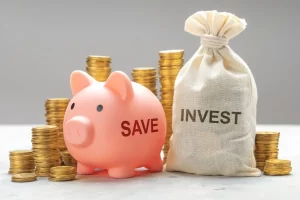- Debts and Credit
How to Avoid High Interest Rates on Credit Cards and Overdrafts

High interest rates on credit cards and overdrafts can quietly drain your finances. What begins as a minor balance or a temporary overdraft can snowball into unmanageable debt if left unchecked. Understanding how these interest rates work—and how to avoid or reduce them — is essential to taking control of your financial life.
Whether you’re managing personal expenses or navigating a rough financial patch, this guide offers practical strategies to minimize or eliminate interest charges from credit cards and overdrafts. Let’s explore how to avoid falling into the trap of high-interest borrowing.
The Cost of High-Interest Debt
Credit cards and overdrafts are two of the most commonly used forms of revolving credit. They’re convenient, flexible, and readily available. But convenience often comes at a cost — interest rates on these financial tools are among the highest in consumer finance.
- Credit card interest rates can range anywhere from 15% to over 35% annually (APR).
- Overdraft fees and interest rates can vary by bank but may include daily charges, fixed fees per transaction, or high APRs.
Even small balances can grow rapidly under these conditions, especially if you only make minimum payments or regularly exceed your account limit.
Why Credit Card and Overdraft Interest Is So Dangerous
These types of debt are particularly problematic for several reasons:
- They are open-ended: You can continue borrowing without reapplying, making it easy to build a large balance.
- They often compound daily or monthly, meaning you pay interest on top of interest.
- Fees and penalties add up, further increasing the total cost.
- They can negatively impact your credit score, making it harder to qualify for better terms elsewhere.
The good news? You have more control than you might think. Let’s dive into how to avoid these financial traps.
Strategy 1: Pay Your Full Credit Card Balance Every Month
One of the most effective ways to avoid credit card interest entirely is to pay off your full balance before the due date. Most credit cards offer a grace period — a window of time during which no interest is charged if the full balance is paid.
Benefits:
- You pay zero interest
- You avoid late fees
- It keeps your credit utilization low, which boosts your credit score
Pro Tip:
Set up automatic payments for the full amount due each month. If you can’t afford the full balance, pay as much as possible above the minimum to reduce the interest on the remaining balance.
Strategy 2: Avoid Using Your Overdraft as a Regular Credit Tool
Overdrafts are meant for short-term emergencies — not as a regular borrowing method. Many people fall into the trap of using overdrafts to cover bills or everyday spending, often unaware of the daily or monthly charges being applied.
Tips to Reduce Overdraft Use:
- Keep a buffer: Always aim to have a small balance in your account to avoid slipping into overdraft unintentionally.
- Track your spending: Use mobile banking apps to monitor account activity and balances in real-time.
- Set alerts: Many banks let you set up notifications when your balance drops below a certain amount.
If you rely on overdrafts regularly, it’s time to rework your budget or seek a low-interest line of credit instead.
Strategy 3: Transfer Balances to Lower-Interest Products
If you’re carrying a balance on a high-interest credit card, consider transferring it to a product with a lower or 0% introductory interest rate. These offers are often available for a limited time, allowing you to reduce or eliminate interest while paying down the debt faster.
Options Include:
- 0% APR balance transfer credit cards
- Personal loans with lower interest rates
- Debt consolidation loans
Important Notes:
- Always check for balance transfer fees (typically 3–5% of the transferred amount).
- Pay off the balance before the promotional period ends to avoid retroactive interest.
- Avoid making new purchases on the transferred card — it could void the 0% offer.
Strategy 4: Negotiate Lower Interest Rates with Your Lender
Many consumers don’t realize they can simply call their credit card issuer or bank and ask for a lower rate — and it often works, especially if you’ve been a loyal and responsible customer.
How to Negotiate:
- Highlight your positive payment history and credit score.
- Mention competing offers from other lenders.
- Be respectful, but firm in your request.
Example Script:
“I’ve been a customer for a few years now and have made my payments consistently. I noticed my current interest rate is quite high compared to other offers I’m seeing. Is there any way you could lower my rate?”
A few percentage points can make a huge difference over time.
Strategy 5: Prioritize High-Interest Debt in Your Budget
A crucial step in avoiding interest charges is making a plan to eliminate existing high-interest debt as quickly as possible. The longer the balance sits, the more it costs you.
Two Popular Approaches:
- Debt Avalanche Method: Focus on paying off the debt with the highest interest rate first while making minimum payments on the others.
- Debt Snowball Method: Focus on the smallest balances first for quicker wins and motivation.
Whichever you choose:
- Make consistent monthly payments.
- Redirect any extra income (bonuses, tax refunds, side gigs) toward debt reduction.
- Avoid adding new charges while you’re paying off old ones.
Strategy 6: Use Debit or Prepaid Cards Instead of Credit
For people trying to break the cycle of high-interest debt, it can be helpful to avoid credit altogether for a period of time. Debit cards and prepaid cards allow you to spend only what you have, avoiding interest charges completely.
Benefits:
- No interest or late fees
- Better control over spending
- Safer than carrying cash
Caution:
- Debit cards may lack the purchase protections of credit cards.
- Prepaid cards sometimes carry fees — always check the terms.
This approach works especially well for budgeting and developing healthier financial habits.
Strategy 7: Improve Your Credit Score to Access Better Rates
Your credit score plays a huge role in the interest rates you’re offered. A higher score means more favorable terms on loans and credit cards — including access to products with lower or even 0% interest.
How to Improve Your Score:
- Pay all bills on time
- Keep credit utilization below 30%
- Avoid opening too many accounts at once
- Dispute any errors on your credit report
Improving your score is a long-term strategy, but it pays off in lower borrowing costs and greater financial freedom.
Strategy 8: Use Credit Only for Planned Purchases
Credit cards can be valuable tools when used wisely. Instead of using them for impulse buys or to cover gaps in your budget, use them for planned, budgeted expenses — like travel, groceries, or bills.
Then, pay off the balance immediately to avoid interest.
Create a Credit Card Plan:
- Assign one card for specific, regular expenses
- Track spending weekly or monthly
- Set payment reminders to avoid late fees and interest
This turns your credit card into a payment method — not a source of debt.
Strategy 9: Compare Banks and Products Regularly
Not all financial institutions are created equal. Some banks charge significantly higher interest rates and fees on overdrafts and credit cards. It pays to shop around.
What to Compare:
- APR (Annual Percentage Rate)
- Overdraft charges (daily, monthly, per-use)
- Grace periods and payment flexibility
- Additional fees (foreign transactions, late fees, etc.)
By switching to a more favorable provider, you can save money even without changing your spending habits.
Strategy 10: Build an Emergency Fund
One of the main reasons people fall into credit card or overdraft debt is because of unexpected expenses — like car repairs, medical bills, or job loss. An emergency fund can eliminate the need to borrow at all.
How Much to Save:
- Start with a goal of $500 to $1,000
- Then build up to 3–6 months of essential expenses
Even a small emergency fund can break the cycle of borrowing and prevent costly interest charges.
Final Thoughts: Small Habits Lead to Big Savings
Avoiding high interest rates on credit cards and overdrafts doesn’t require drastic measures — it’s about consistency, awareness, and smart choices. By understanding how these financial tools work and taking proactive steps, you can:
- Reduce your cost of borrowing
- Avoid financial stress
- Build long-term financial stability
Every dollar you save on interest is a dollar you can redirect toward your goals—whether it’s saving, investing, or simply enjoying more peace of mind.
Stay intentional, stay informed, and remember: you’re in control of your financial future.






